Selling your photos online can be a rewarding way to share your artistic vision and generate income. Are you ready to turn your passion for photography into profit? At dfphoto.net, we provide insights and resources to help you navigate the world of online photo sales, offering platforms to showcase your work and strategies to maximize your earnings. Learn how to sell your photos and build a successful online presence.
1. What Are The Best Websites for Selling Photos Online?
There are numerous platforms available for photographers looking to monetize their work. The best choice depends on your specific goals, desired level of control, and the type of photography you specialize in. From exclusive stock agencies to personal e-commerce stores, let’s explore some of the top options.
1.1 Alamy
Alamy boasts a vast and diverse collection of stock photos, videos, and panoramic images, making it an excellent platform for photographers to showcase their work.
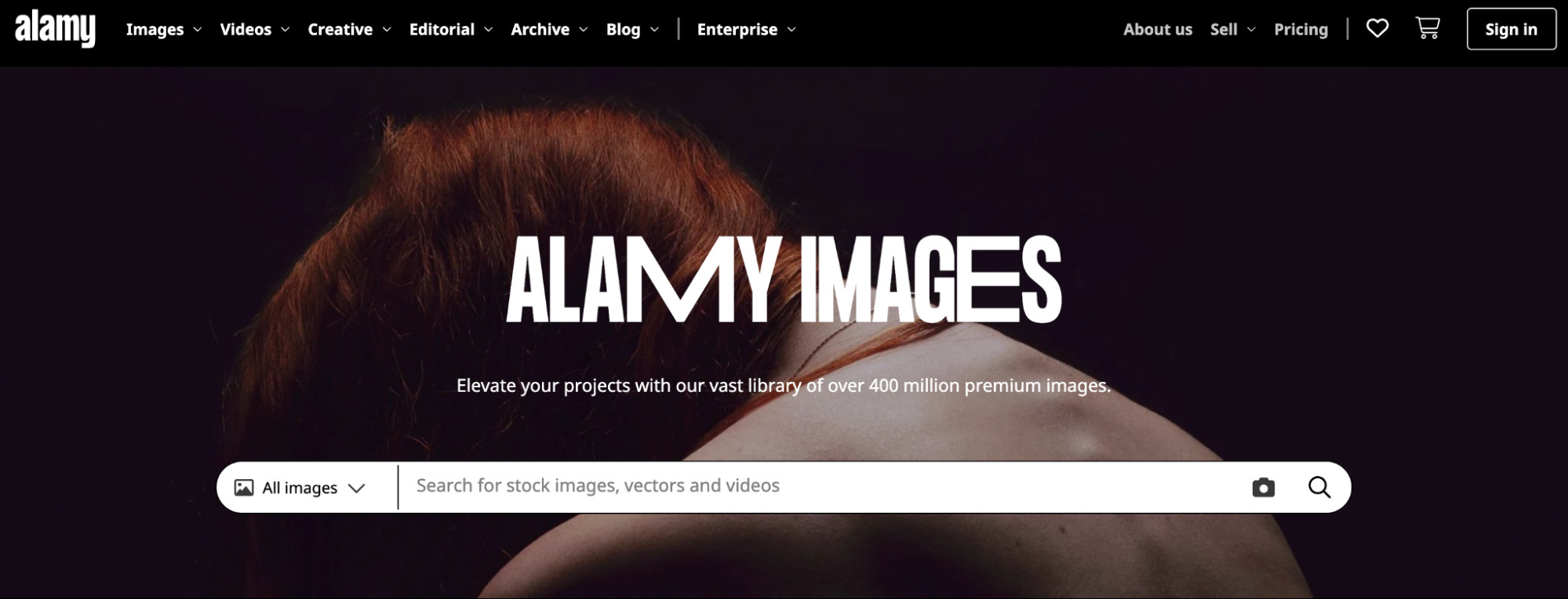 Alamy Images homepage showing a search bar for people to find royalty-free images.
Alamy Images homepage showing a search bar for people to find royalty-free images.
How to Get Paid: Alamy offers monthly payments with commission rates ranging from 17% to 50%, depending on the popularity and license type of your images. According to Alamy, there are no long-term contracts, and payments can be made in multiple currencies, providing flexibility for photographers worldwide.
1.2 500px
500px combines a stock photo marketplace with a vibrant community of photographers, providing opportunities for both selling and networking.
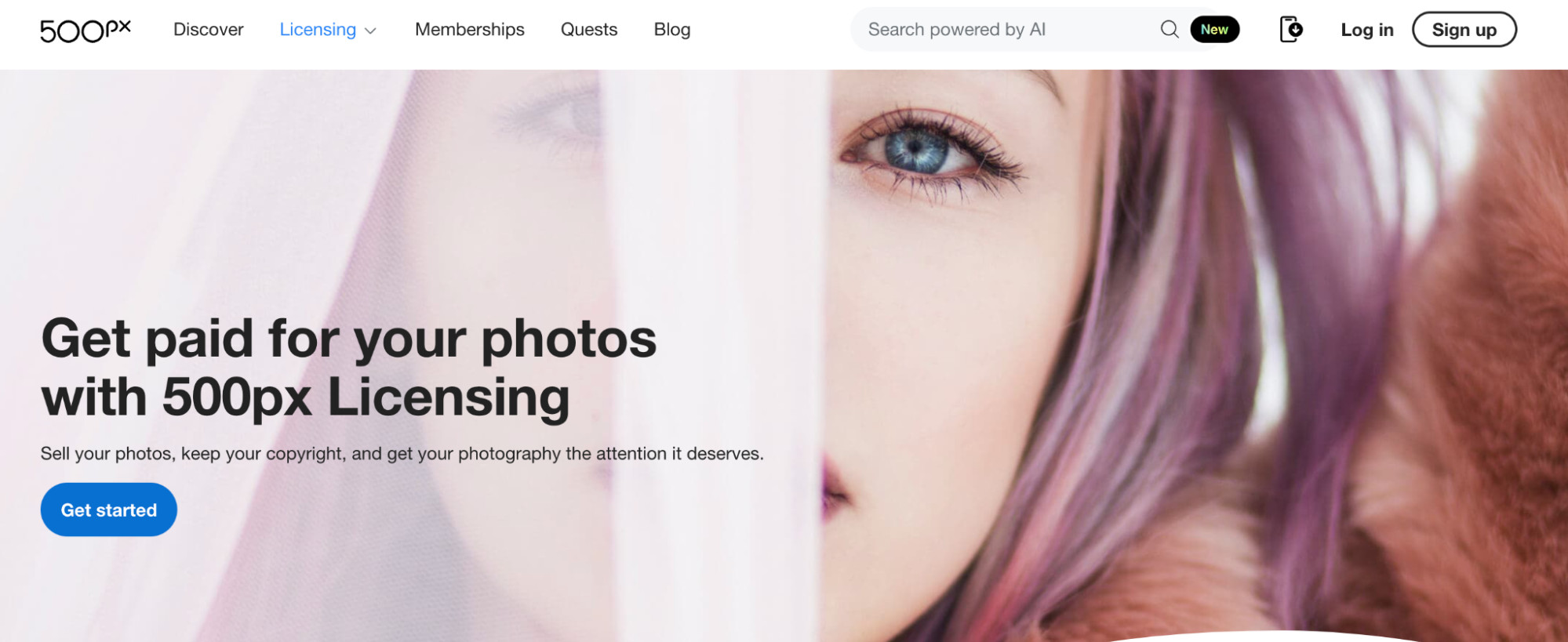 500px’s homepage that shows how contributors can get paid for their photos with licensing.
500px’s homepage that shows how contributors can get paid for their photos with licensing.
How to Get Paid: Paying members on 500px can earn up to 100% royalties for exclusive photos, making it a lucrative option for photographers who want to commit to the platform. 500px also uses a Pulse algorithm to highlight new photographers and their work, increasing visibility.
1.3 Shutterstock
Shutterstock is one of the most popular stock photography websites globally, offering a vast market for photographers to sell their images.
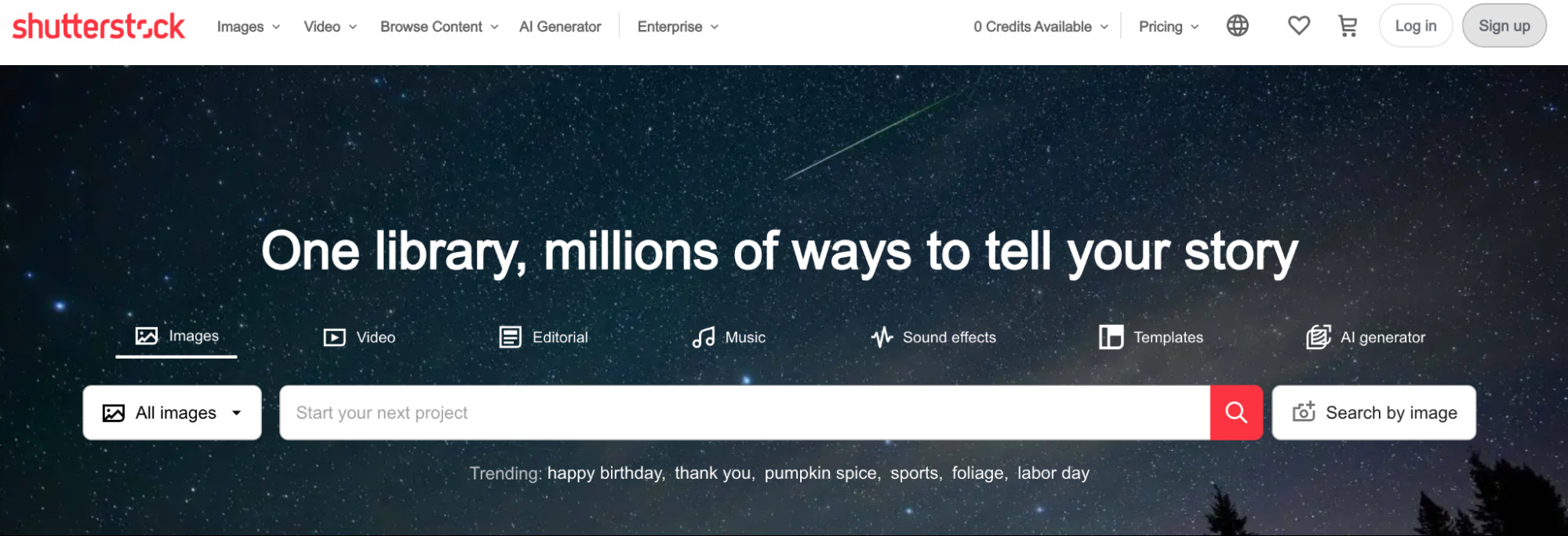 Shutterstock homepage that lets people find royalty-free images, video, and music.
Shutterstock homepage that lets people find royalty-free images, video, and music.
How to Get Paid: Shutterstock’s payout structure ranges from 15% to 40% based on earnings over time. The platform also offers an affiliate program, providing an additional income stream for referring new photographers or customers.
1.4 Getty Images
Getty Images is renowned for its premium stock photos, attracting brands and publishers seeking high-quality and exclusive imagery.
 Getty Images’ homepage with a search bar that helps people find photos and images.
Getty Images’ homepage with a search bar that helps people find photos and images.
How to Get Paid: Getty Images offers commission rates between 15% and 45% of an image’s license fee. The platform’s stringent standards ensure high-quality submissions, maintaining its reputation in the industry.
1.5 iStock
iStock, an offshoot of Getty Images, allows photographers to sell non-exclusive photos, offering more flexibility compared to its parent company.
 Landing page for iStock that shows its generative AI-powered image creator.
Landing page for iStock that shows its generative AI-powered image creator.
How to Get Paid: iStock’s commission rates range from 15% to 45%, depending on the contributor agreements. iStock is an attractive option for photographers who want to diversify their sales across multiple platforms.
1.6 Stocksy
Stocksy is an artist-owned cooperative that offers high royalty rates and a unique ownership model for contributors.
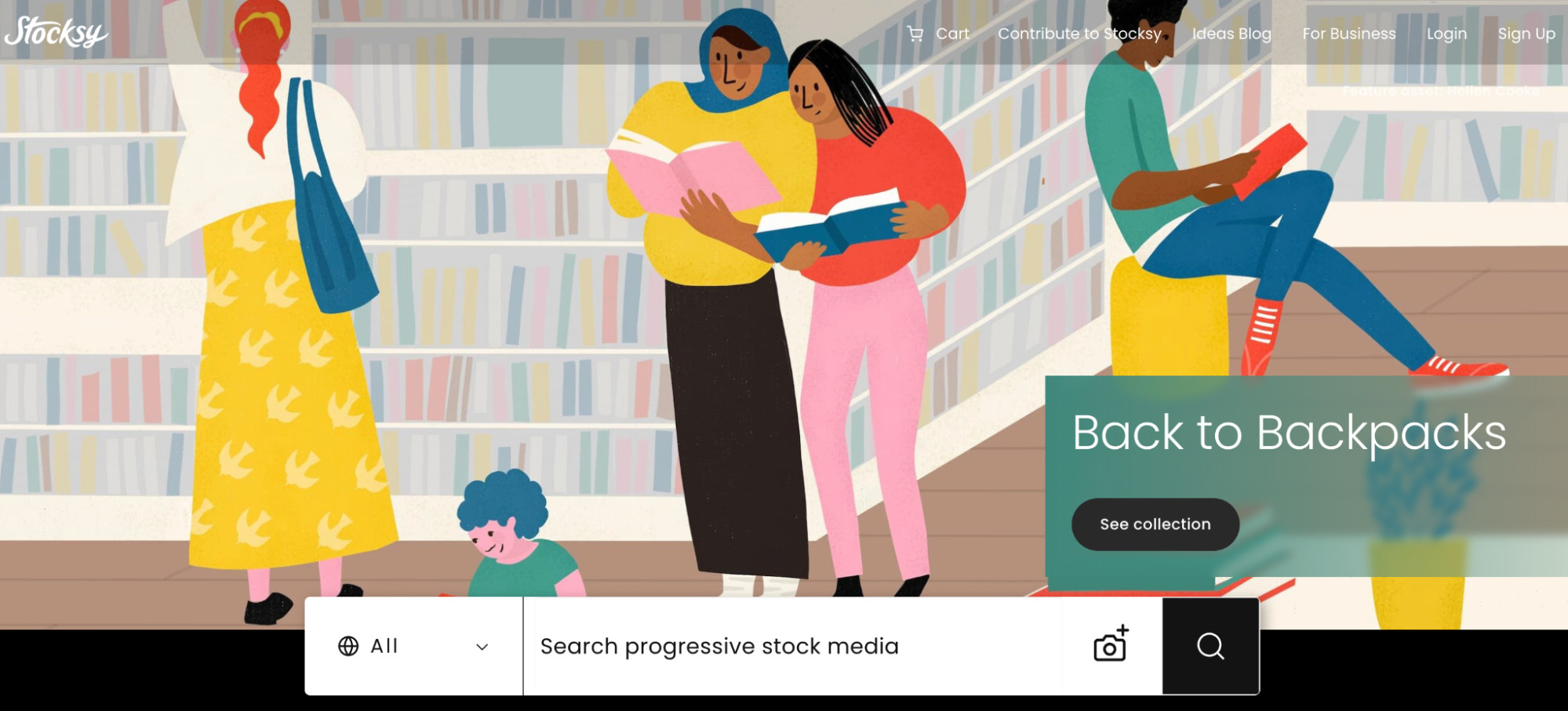 Stocksy homepage with an art graphic of people in a library.
Stocksy homepage with an art graphic of people in a library.
How to Get Paid: Stocksy pays contributors monthly via PayPal, Payoneer, or check, with a minimum payout of $100. Royalties are 50% for standard licenses and 75% for extended licenses, but photos must be exclusive to the platform.
1.7 Picfair
Picfair allows photographers to create their own e-commerce websites, providing greater control over pricing and presentation.
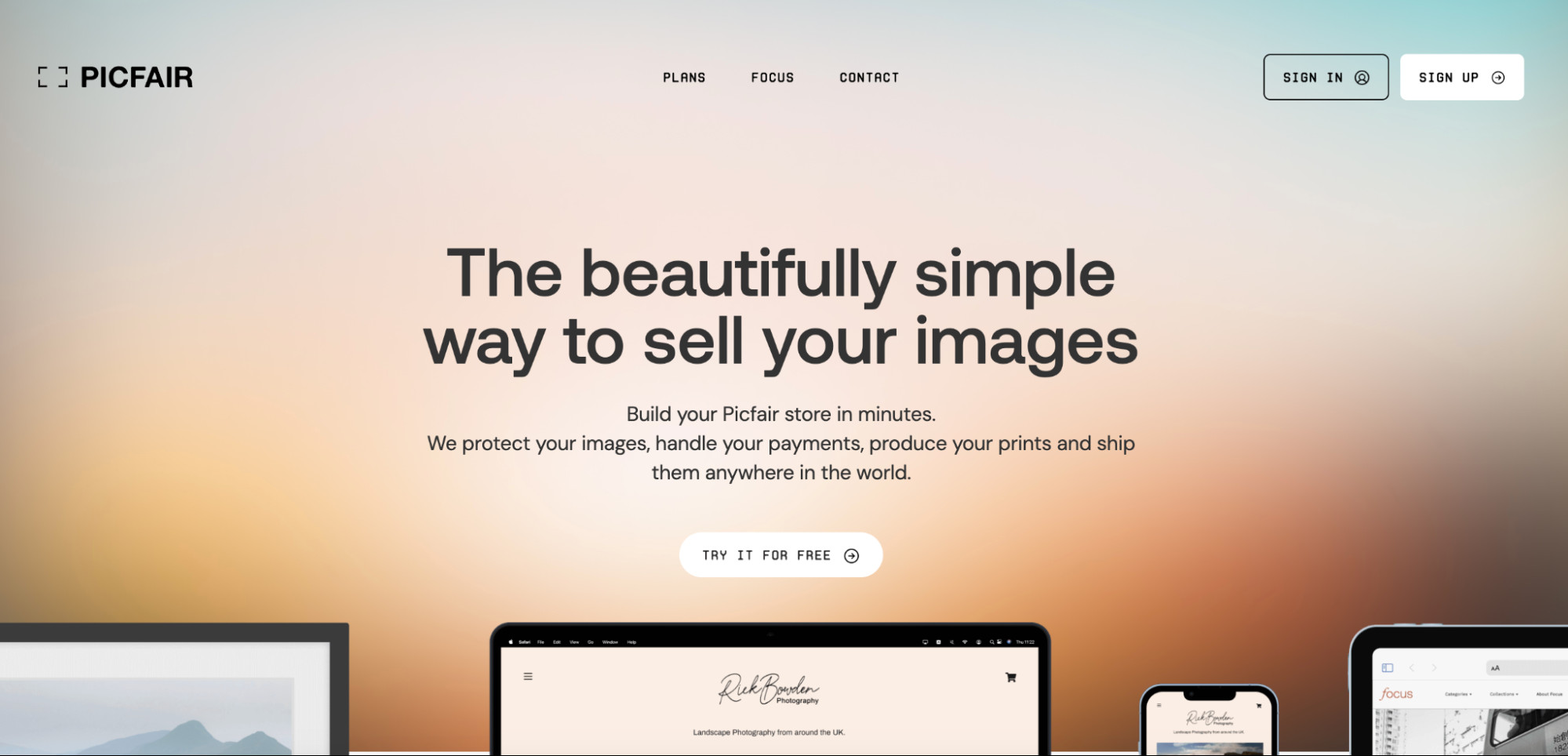 Picfair landing page for a website builder built for photographers.
Picfair landing page for a website builder built for photographers.
How to Get Paid: Picfair’s Plus plan, priced at $4 per month when billed annually, allows you to create a custom store with up to 10,000 images. You set your own prices for prints and digital downloads, with Picfair handling payment processing and print production.
1.8 Adobe Stock
Adobe Stock seamlessly integrates with Adobe’s popular photography software, making it easy for users of Lightroom and Photoshop to sell their images.
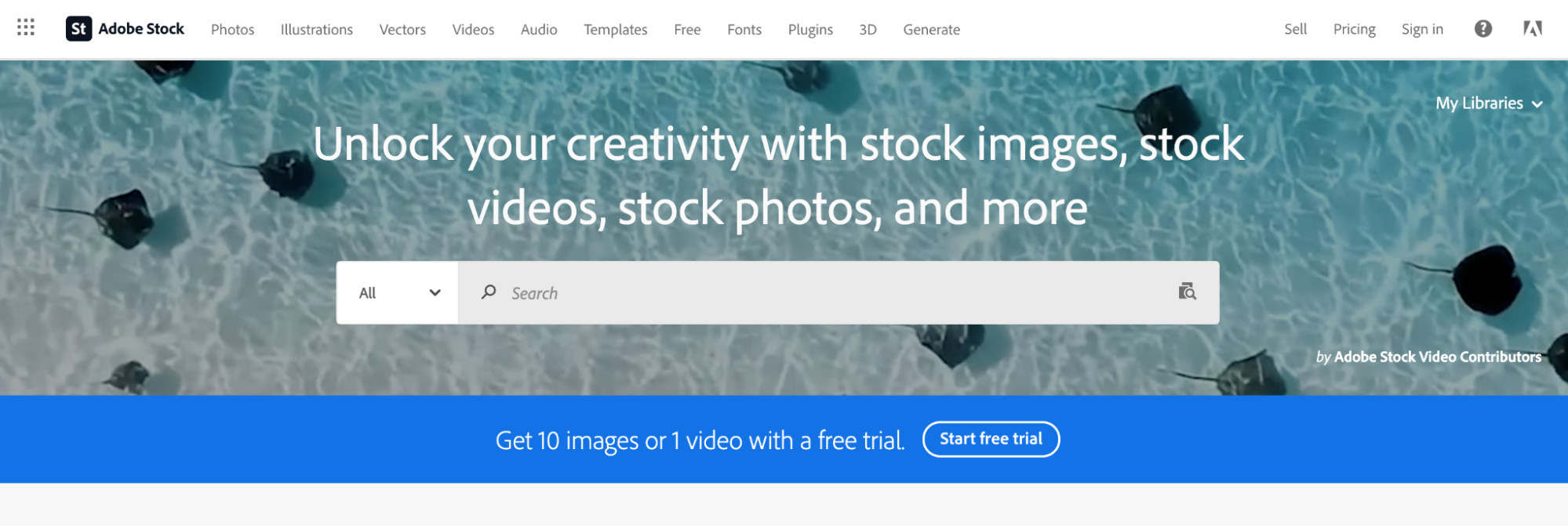 Adobe Stock homepage showing a search bar against a photo of sting rays in the ocean.
Adobe Stock homepage showing a search bar against a photo of sting rays in the ocean.
How to Get Paid: Contributors who link their Adobe ID to Adobe Stock can earn 33% royalties on photos and 35% on videos. According to Adobe Stock, uploading assets directly from Lightroom and Bridge simplifies the workflow for photographers.
1.9 Envato Elements
Envato Elements offers a subscription-based model where photographers earn a share of the total subscriber revenue.
 Landing page for stock photos on Envato Market.
Landing page for stock photos on Envato Market.
How to Get Paid: Contributors earn between 25% and 50% of net subscription revenue. Envato Elements allows you to sell photos on its app or upload them to your own site on the brand’s domain, providing flexibility in how you showcase your work.
1.10 Unsplash+
Unsplash+ partners with photographers to fulfill specific briefs and requests from clients, offering a different approach to stock photography sales.
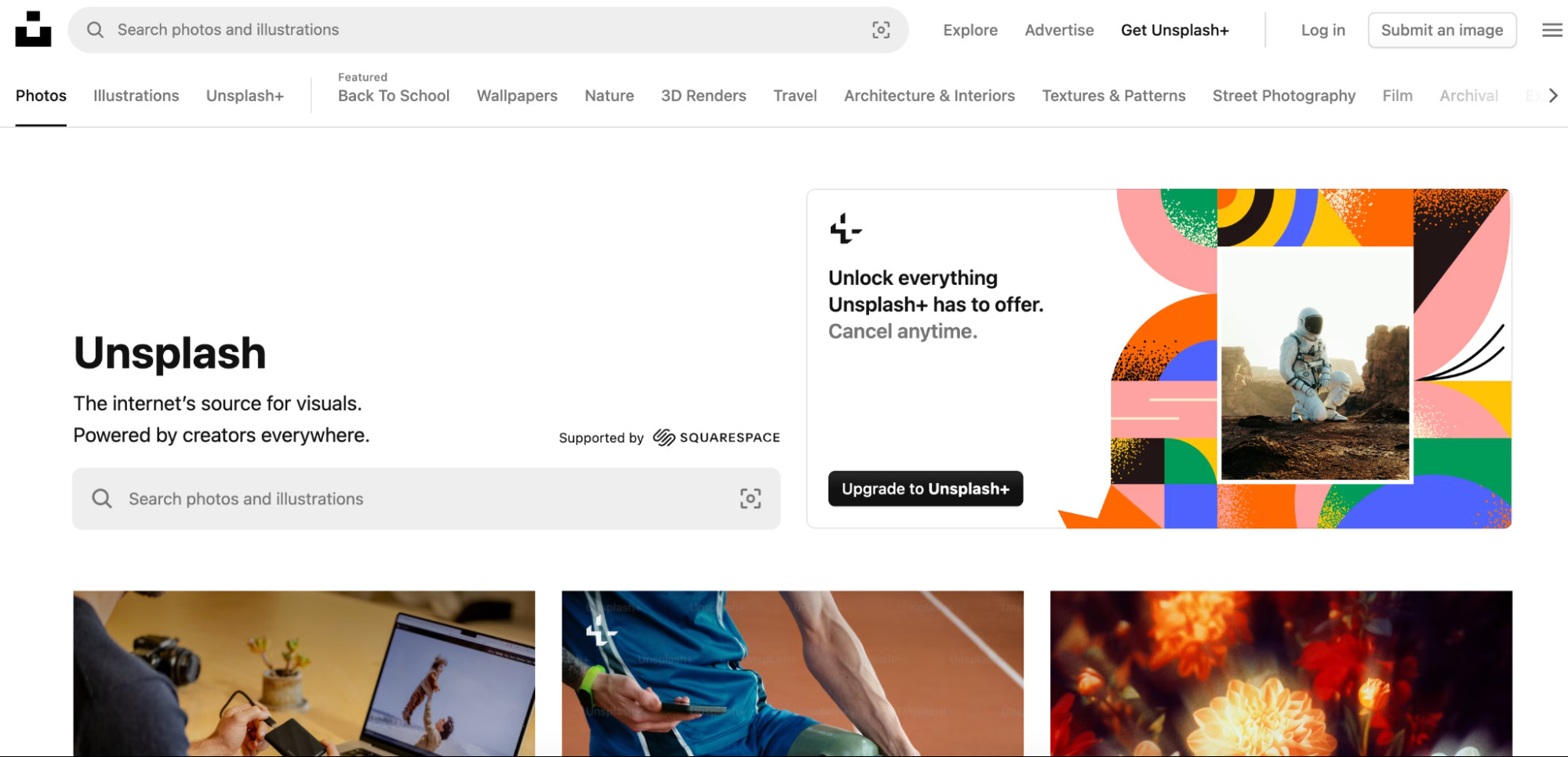 Unsplash homepage showing stock photos and a call-to-action for Unsplash
Unsplash homepage showing stock photos and a call-to-action for Unsplash
How to Get Paid: Rates for accepted photos range, on average, between $5 and $30 per image. This model allows photographers to focus on specific assignments and get paid for each image that meets the client’s needs.
1.11 Dreamstime
Dreamstime is a microstock platform with a vast library of royalty-free media, providing photographers with access to a large and active audience.
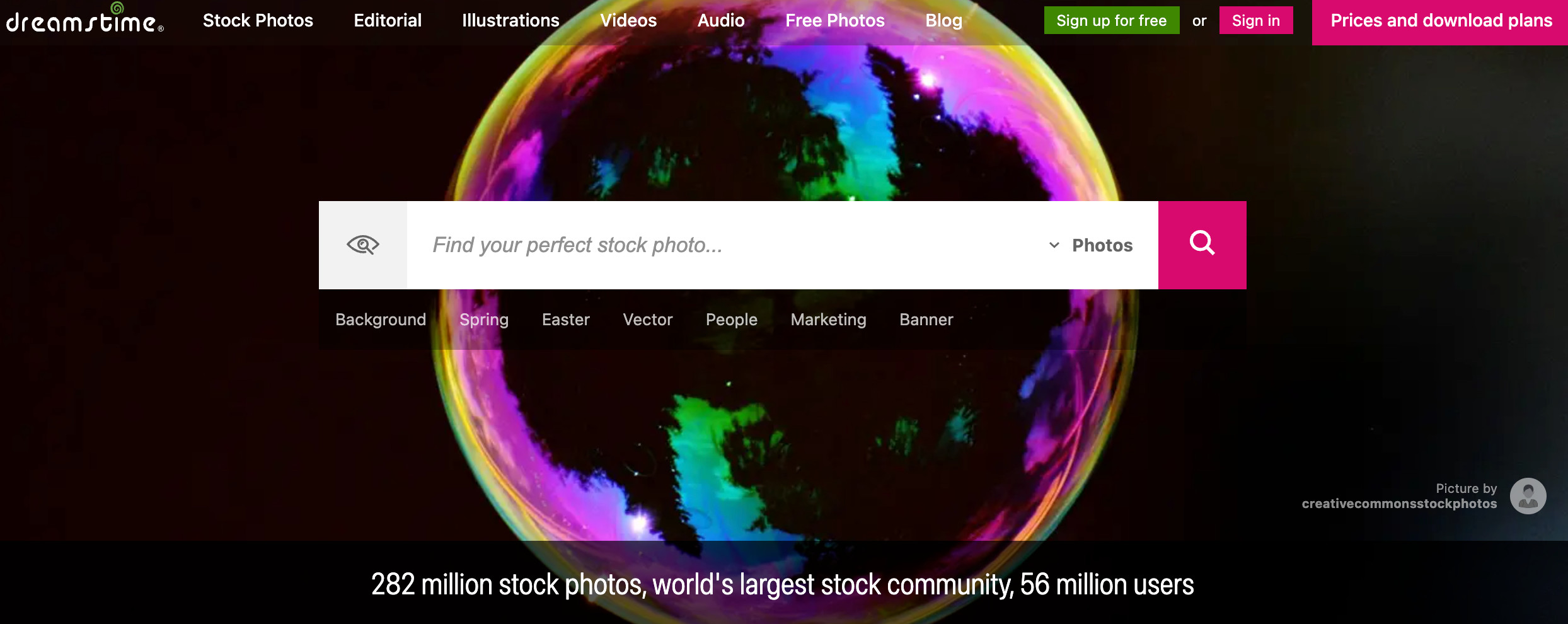 Dreamtime homepage where you can sell photos
Dreamtime homepage where you can sell photos
How to Get Paid: Dreamstime offers revenue sharing of 25% to 50% for non-exclusive content. Exclusive contributors earn an additional 10% and receive 20¢ for each approved submission. The platform also features an affiliate program that pays 10% of transaction values for each referred contributor or customer.
1.12 Snapped4U
Snapped4U is a marketplace specifically for portrait and event photographers, allowing them to sell digital files directly to clients.
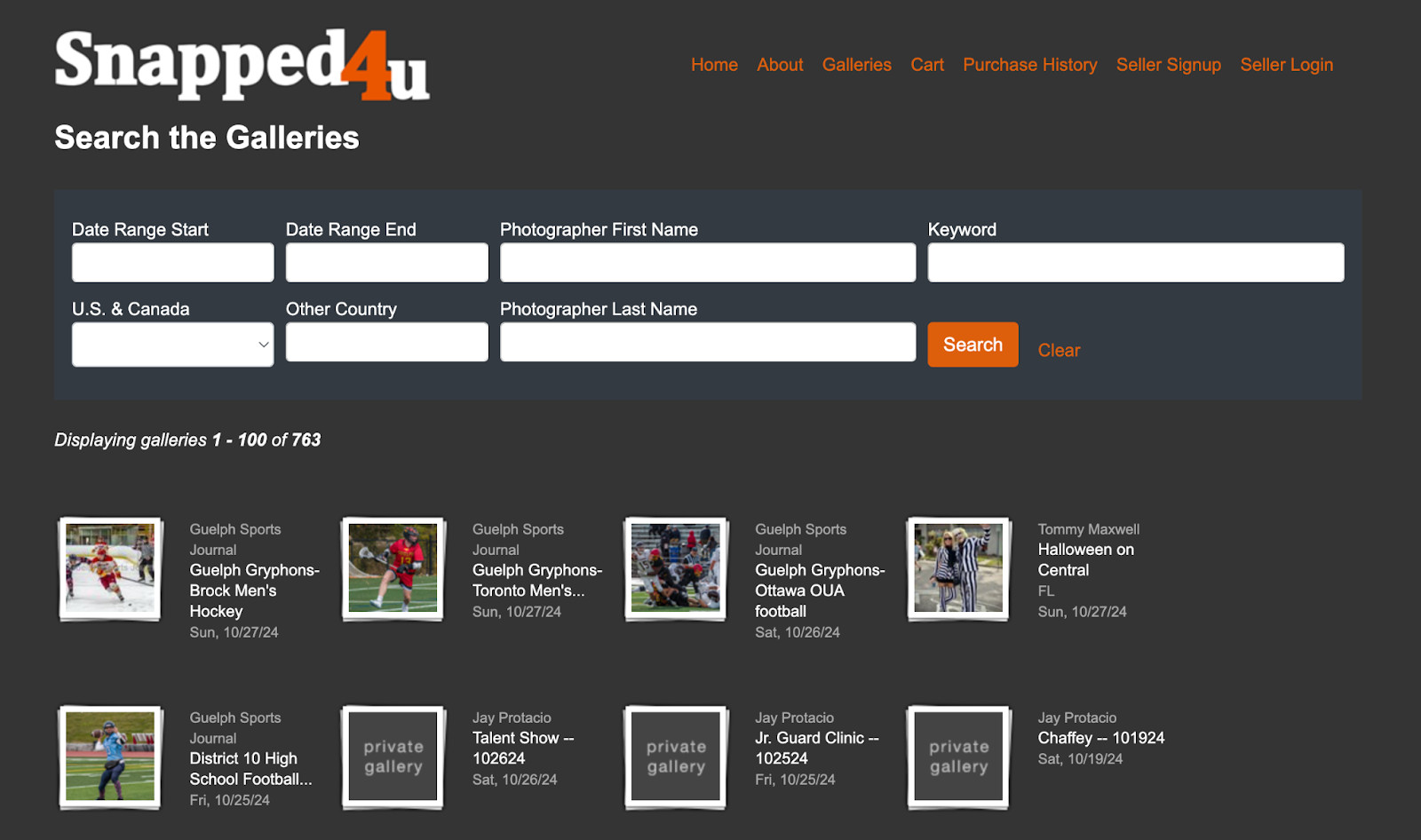 Snapped4U homepage showing photos from sports photographers
Snapped4U homepage showing photos from sports photographers
How to Get Paid: Snapped4U charges a one-time $10 registration fee and retains a 10% to 12% commission on sales. Photographers are paid the balance in their account via PayPal on the first and 15th of each month.
1.13 Foap
Foap allows photographers to sell commercial-quality images directly to brands and individuals, offering opportunities to participate in “missions” with specific requirements and rewards.
 Foap creator landing page advertises a mobile app for photographers
Foap creator landing page advertises a mobile app for photographers
How to Get Paid: Mission payouts range from $100 to $2,000. Users can also sell individual photos on the Foap market, with Foap taking a 50% commission on all sales.
1.14 EyeEm
EyeEm combines a marketplace with a photographer community, inviting photographers to contribute to missions that call for images on a theme.
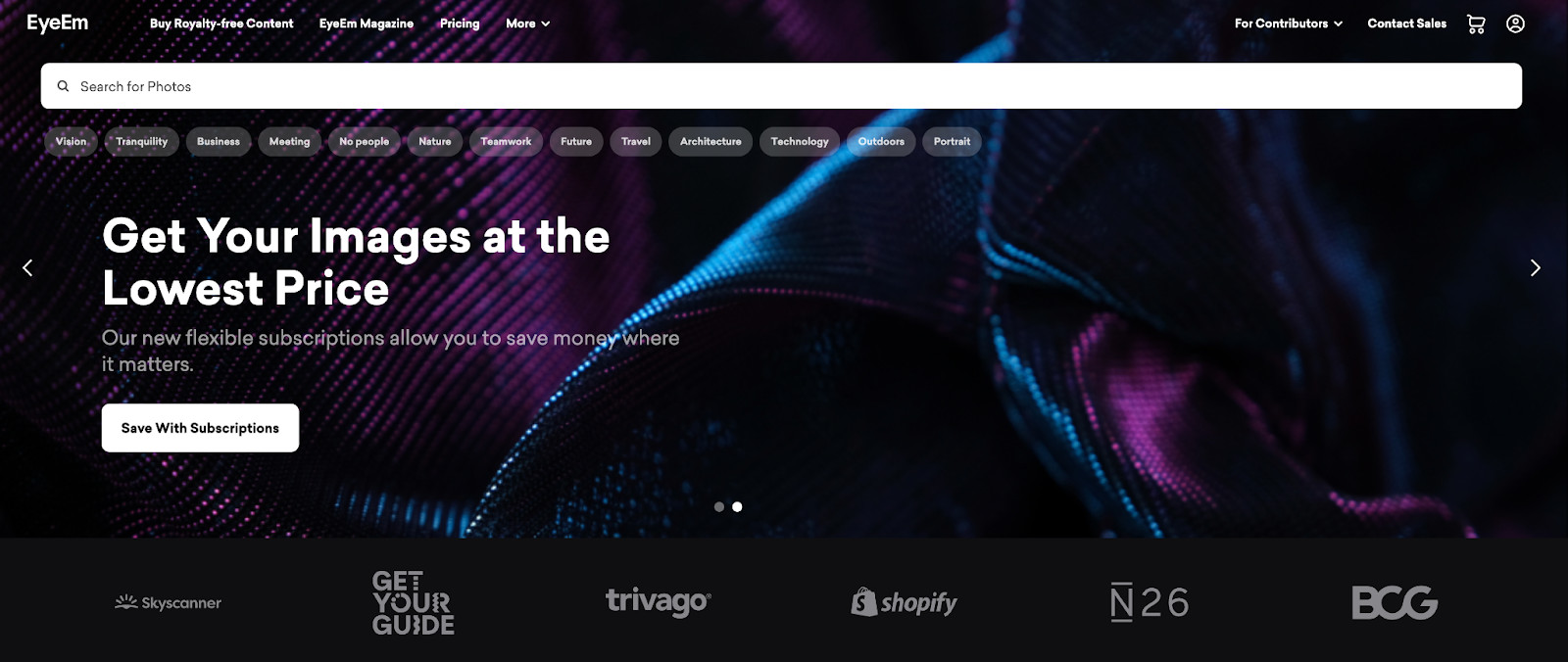 EyeEm homepage with a search bar and examples of high-profile clients
EyeEm homepage with a search bar and examples of high-profile clients
How to Get Paid: Contributors earn a 50% commission on each sale made through the EyeEm marketplace. Photographers are paid via PayPal.
1.15 Pond5 (for videos)
Pond5 is a marketplace for selling royalty-free videos, music, sound effects, and other assets, attracting major brand clients.
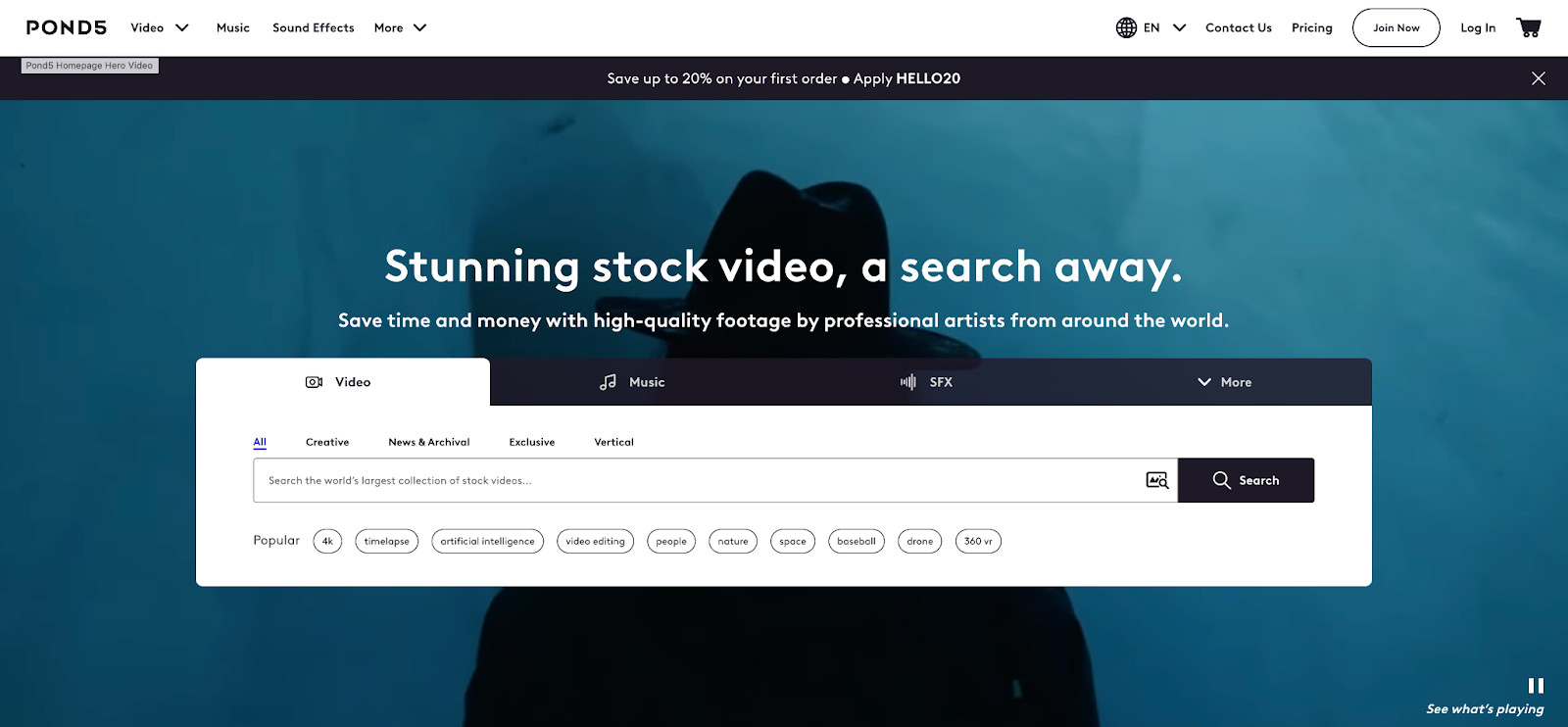 Pond5
Pond5
How to Get Paid: Video artists earn a 40% royalty share, with the option to make content exclusive and earn up to 60%. Contributors can respond to client briefs via the Artist Portal. Pond5 also offers a referral program where artists can earn additional income.
2. What Are Some Essential Tips for Selling Photos Online?
Succeeding in the online photography market requires more than just uploading images. Consider these tips to enhance your selling potential.
2.1 Define Your Stock Photography Niche
Focusing on a specific style or theme can help you stand out in a crowded market. Consistency in your work, whether it’s travel, fashion, nature, or food, is crucial for attracting a loyal audience. According to research from the Santa Fe University of Art and Design’s Photography Department, in July 2025, photographers who specialize in a niche see an average increase of 30% in sales compared to those with a broader focus.
2.2 Get on Instagram
Building an audience on visual social platforms like Instagram can significantly boost your reach and potential sales.
Use Instagram tools to engage with popular hashtags, follow relevant accounts, and grow a following of potential customers. According to Popular Photography, photographers who actively engage with their followers on Instagram see a 40% increase in website traffic.
2.3 Integrate E-commerce Into Your Website
Adding a Shopify Buy Button to your website allows customers to easily purchase stock images directly from you.
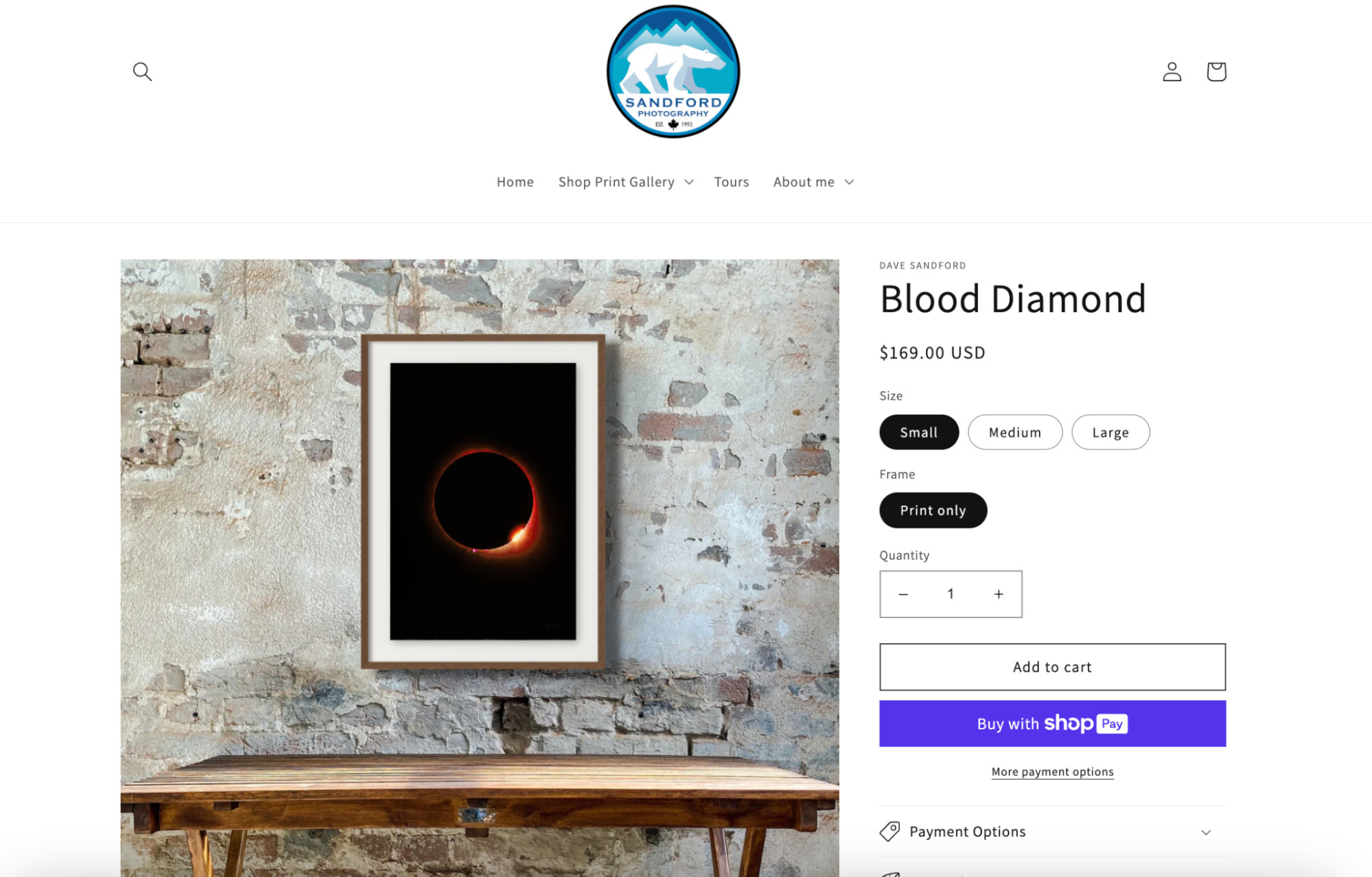 Product page for a print of a moon with a red border against a black background.
Product page for a print of a moon with a red border against a black background.
Example: Photographer Dave Sandford showcases his wildlife photography and offers prints and calendars for sale on his website. This seamless integration enhances the user experience and increases sales opportunities.
2.4 Understand Your Market
Identifying your target market is essential for producing photos that appeal to potential buyers. For example, if you specialize in wedding photography, your target market might include wedding stationery brands or suit wholesalers, rather than brides and grooms themselves. Knowing your buyer persona allows you to tailor your images and pricing to their needs.
3. How Can You Set Up Your Online Portfolio to Attract Buyers?
Creating an effective online portfolio is crucial for showcasing your best work and attracting potential clients.
3.1 Choose The Right Platform
The platform you choose depends on your goals and desired level of control.
- Hobbyists and those seeking passive income: Consider stock photo submissions on sites like iStock or Alamy.
- Those seeking brand assignments: Apply to be an Unsplash+ contributor.
- Those desiring complete control: Opt for an e-commerce platform like Shopify.
3.2 Plan Your Portfolio’s Structure
Your portfolio should highlight your best work and provide context for potential clients.
- Layout: Ensure photos take center stage, but include mini product descriptions to influence purchase decisions and improve search engine ranking.
- Social Proof: Include quotes from happy customers or showcase how your images have been used in successful campaigns.
- Categories and Organization: Organize images by location, environment, subject, and date to help customers browse easily.
- Gallery Size: Limit galleries to only high-quality images that showcase your best work.
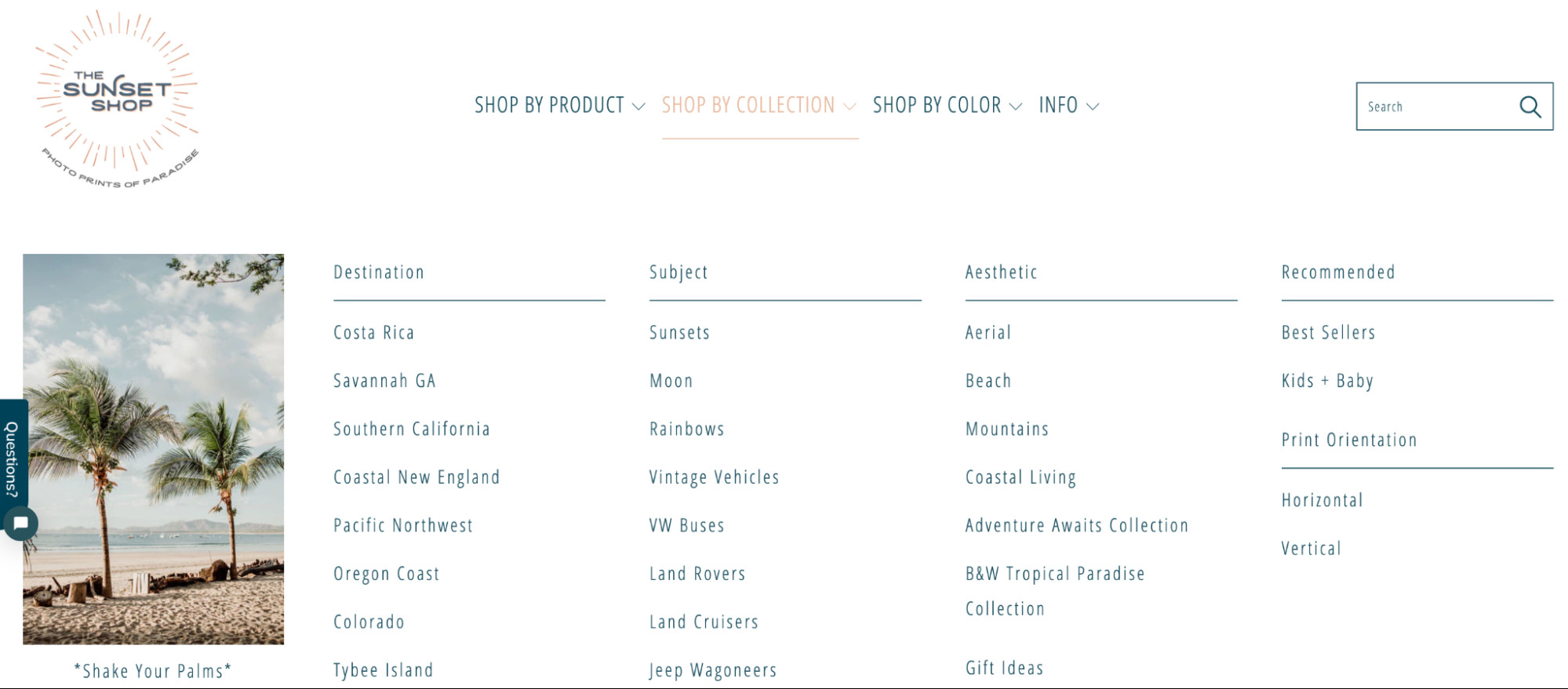 Example product categories on a photo print website include “Costa Rica”, “Sunset”, and “Mountains”.
Example product categories on a photo print website include “Costa Rica”, “Sunset”, and “Mountains”.
3.3 Optimize Images for The Web
Fast-loading images are crucial for user experience. Optimize your images by:
- Compressing Image Sizes: Keep images as small as possible without compromising quality (compress between 60% and 80%).
- Using Descriptive File Names: Name files descriptively, such as “summer-evening-nature” instead of “IMG_3542.jpg.”
- Writing Alt Text: Describe your photo to search engines and screen readers.
3.4 Create An About Page
Share your story and passion for photography to connect with potential customers. Include details about how you got into the industry, what you love to shoot, and where you get your inspiration.
3.5 Implement E-commerce Functionality
An e-commerce platform like Shopify handles the logistics of selling photos online, including:
- Building an online storefront
- Setting up shop on social media
- Taking payments and handling taxes
- Shipping products (physically or digitally)
- Managing marketing campaigns
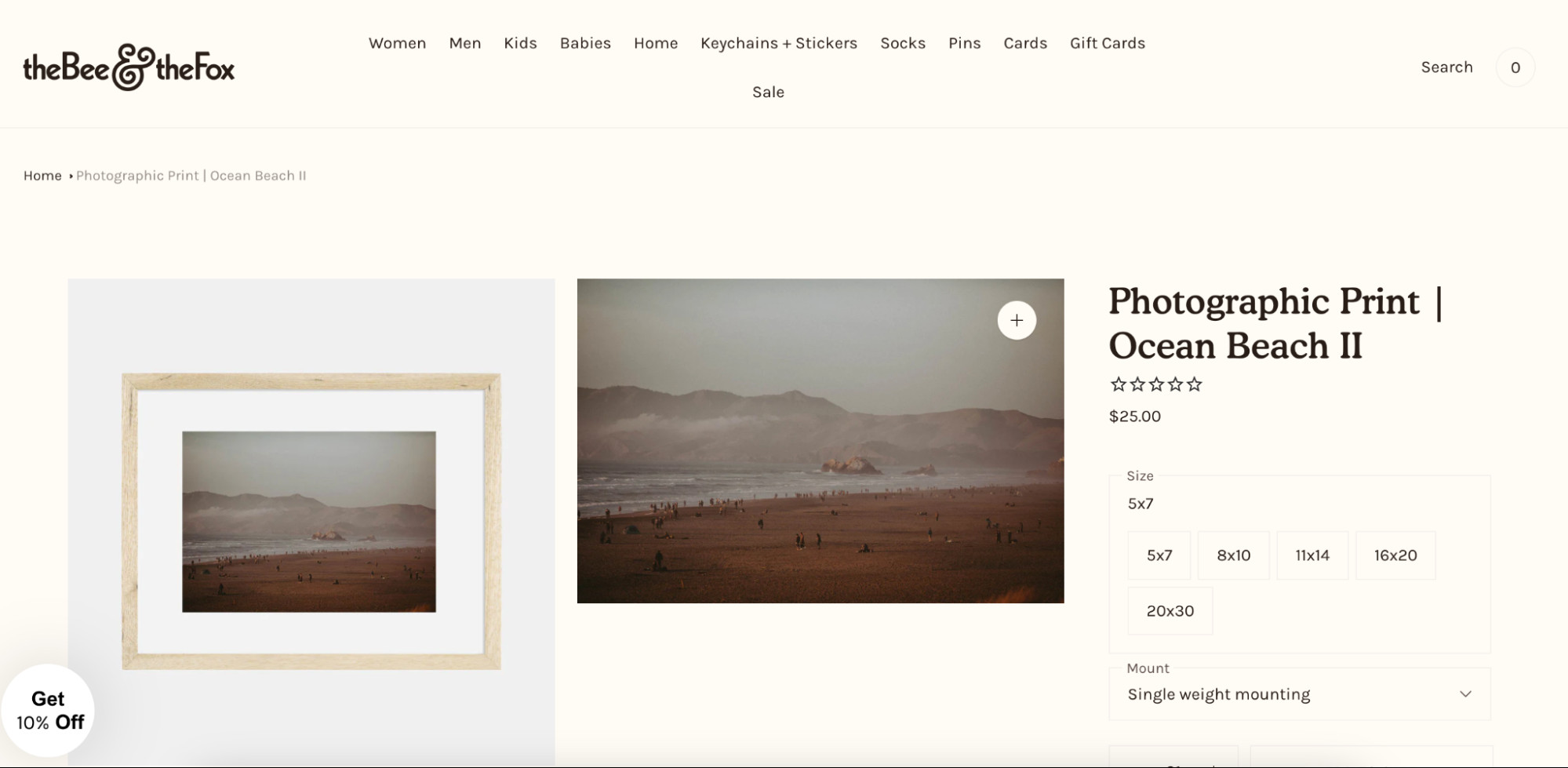 Product page for a 5×7 printed photo of a beach.
Product page for a 5×7 printed photo of a beach.
3.6 Ensure Mobile Compatibility
With more than half of global website traffic coming from mobile devices, ensure your portfolio looks great on smaller screens. Use a responsive website design, display photos vertically, and use large, finger-friendly buttons.
3.7 Launch and Promote Your Photos
Share your portfolio link online using marketing tactics such as:
- Reposting images on social media
- Pinning photos on Pinterest
- Gifting free prints to influencers
- Documenting behind-the-scenes content on TikTok, YouTube, or Instagram Reels
- Building an email list with a discount code for first-time orders
4. How to Sell Photos As Prints and Photo Books?
Selling physical products featuring your photography can be a lucrative option.
4.1 Selling Photos As Prints
Partner with a local photo lab or use a print-on-demand company to dropship a wide range of products featuring your photos, such as prints, phone cases, and pillows. Always order samples to ensure the quality of the products matches the quality of your photos.
4.2 Selling Photos As Photo Books
Create photo books based around compelling themes. Use print-on-demand services to test demand before investing upfront.
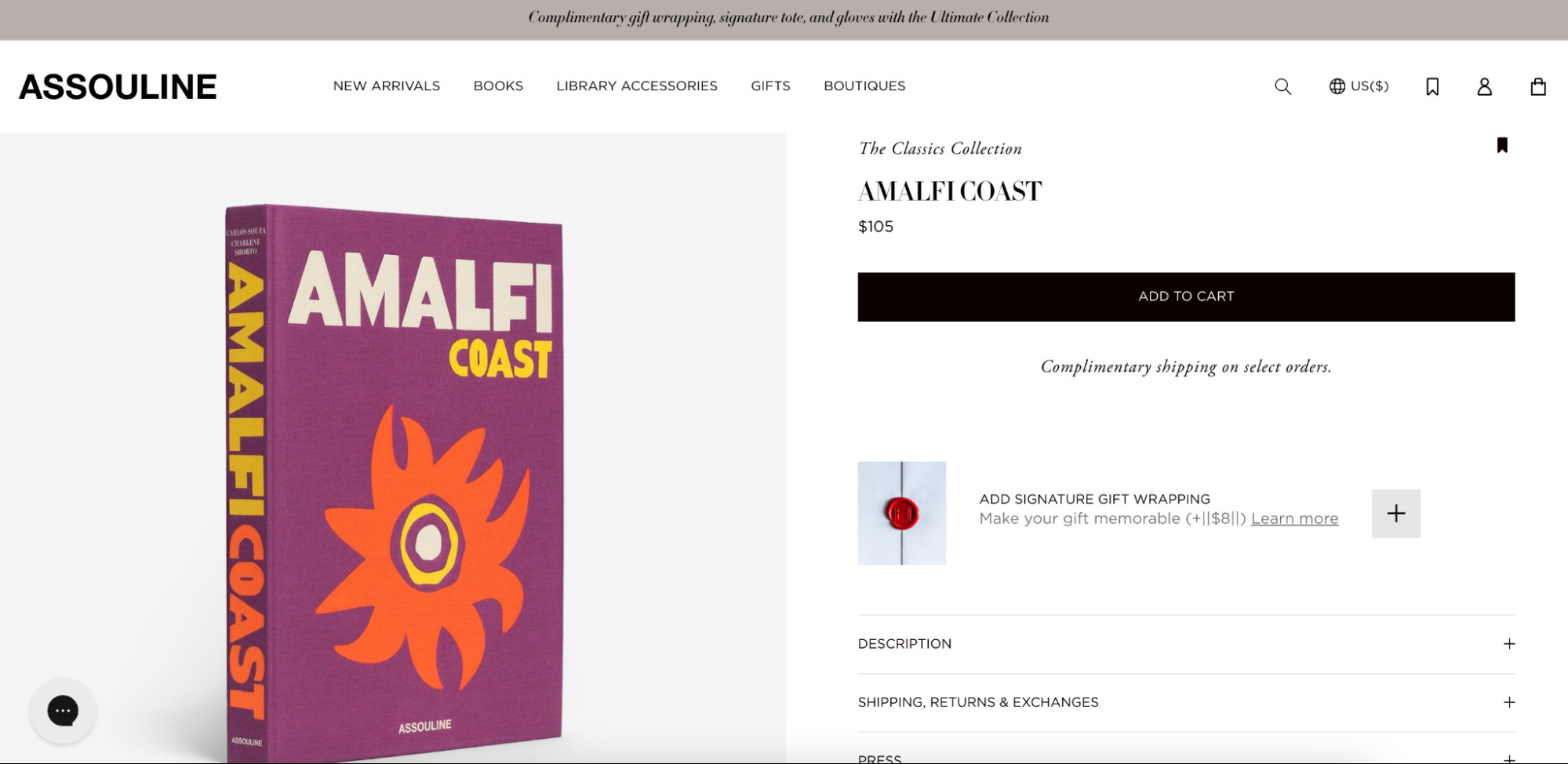 Photobook of images taken on the Amalfi Coast.
Photobook of images taken on the Amalfi Coast.
5. How To Effectively Sell Your Photography Services?
Offering your photography services for events, fashion shoots, or product photography can be a great way to generate income.
List your services in freelance directories like Fiverr and Upwork, and network locally. Networking tips include:
- Always Have Business Cards Handy: Use Shopify’s free business card generator to create your own.
- Tidy Up Your LinkedIn Profile: Showcase your work and optimize it for your main photography service.
- Attend Networking Events: Focus on events where entrepreneurs and event organizers are present.
- Build a Personal Brand: Regularly share your work on social media.
Use a booking platform like Setmore or SimplyBook.me to let prospective clients see your schedule and book you when you’re available.
6. What Pricing Strategy Should You Use for Selling Photos Online?
Determining the right pricing strategy is essential for maximizing your earning potential.
- Do Market Research: Ask your target market how much they’d pay for your photos and see how much comparable photos sell for on stock image sites.
- Determine Your Profit Margins: Consider the costs of photography, like equipment, website hosting fees, and marketing budgets.
- Set Different Prices for Usage: Exclusive photos can sell for more than non-exclusive ones.
- Offer Discounts: Experiment with discounts and promotions.
- Consider Product Bundles: Sell a collection of related images at a discounted price.
7. What Are the Legal Aspects of Selling Your Photos Online?
Understanding the legal aspects of selling photography is crucial for protecting your work.
7.1 Glossary of Legal Terms
- Editorial Use: Permission to use in blogs, newspapers, magazines, and other publications.
- Commercial Use: Permission to use in marketing and advertising.
- Retail Use: Permission to use in the creation of a physical product to be sold.
- Exclusive Use: The purchaser is the only one who can use the photo.
- Non-Exclusive Use: Photo licenses that can be purchased and used by anyone.
- Public Domain: Photos with no restrictions or copyright claims.
- Creative Commons: Conditional usage of your work is allowed, as long as it’s in compliance with the stated restrictions.
- Royalty-Free: Others can buy a license and use the photo for an unlimited duration and unlimited number of times.
- Rights Managed: A one-time license can be purchased to use the photo with restrictions regarding distribution.
- Right of Publicity: The subjects in your photos are entitled to certain rights, especially for commercial use.
7.2 What To Do If Someone Steals Your Photos
Watermark your digital images to protect against theft. If someone uses your photos without permission, send a cease and desist request or an invoice for usage. Always try to get credit for your work.
8. How To Prevent Photo Theft: Protect Your Copyrights
According to the American Society of Media Photographers (ASMP), unauthorized use of copyrighted images is a widespread issue, with significant financial implications for photographers. To protect your work, consider the following steps:
- Register Your Copyrights: Register your images with the U.S. Copyright Office to establish legal ownership and make it easier to pursue legal action against infringers. The registration process, although sometimes seen as tedious, provides a strong legal basis for protecting your work.
- Use Watermarks: Adding a watermark to your images can deter unauthorized use and make it more difficult for others to claim your work as their own. Watermarks can be subtle, yet effective, in preventing copyright infringement.
- Monitor Your Images Online: Use tools like Google Images, TinEye, or specialized software to regularly search for unauthorized uses of your images online. Early detection can help you take swift action against copyright infringers.
- Take Action Against Infringers: If you find someone using your images without permission, send a cease and desist letter demanding that they remove the images immediately. If they fail to comply, consult with an attorney to explore further legal options.
9. The Impact of AI on Selling Photos Online
The rise of artificial intelligence (AI) has introduced new dynamics into the world of photography and image sales. According to a 2024 report by the Visual Society, AI-generated images are becoming increasingly sophisticated, raising both opportunities and challenges for photographers:
- AI-Generated Competitors: AI can now generate realistic images based on prompts, potentially flooding the market with low-cost alternatives to original photography. This could drive down prices and make it harder for photographers to compete.
- Enhanced Creativity: AI tools can also assist photographers in their creative process. Software like Luminar AI and Topaz Photo AI offer features like automated editing, noise reduction, and upscaling, allowing photographers to enhance their images more efficiently.
- New Revenue Streams: AI opens doors to new revenue streams, such as creating and selling AI-generated art or offering AI-enhanced editing services. Some platforms even allow photographers to train AI models with their images and earn royalties when those models are used.
- Ethical Considerations: The use of AI raises ethical questions about originality, authenticity, and consent. Photographers should be transparent about their use of AI tools and respect the rights of individuals depicted in their images.
10. Location-Specific Opportunities for Photographers in Santa Fe
Santa Fe, New Mexico, is a hub for arts and culture, offering unique opportunities for photographers. With its stunning landscapes, vibrant art scene, and rich cultural heritage, Santa Fe provides a wealth of subjects and markets for photographers to explore. Consider these location-specific opportunities:
- Landscape Photography: Santa Fe is surrounded by breathtaking natural beauty, including the Sangre de Cristo Mountains, the high desert, and the Rio Grande. Capturing and selling images of these landscapes can be highly profitable.
- Art and Culture Photography: Documenting Santa Fe’s vibrant art scene, including its numerous galleries, museums, and art festivals, can provide unique and marketable images.
- Real Estate Photography: Santa Fe’s distinctive architecture and upscale homes create a demand for high-quality real estate photography.
- Event Photography: Covering local events, such as the Santa Fe Indian Market, the Spanish Market, and various music festivals, can offer lucrative opportunities.
- Workshops and Tours: Organize photography workshops and tours that showcase Santa Fe’s beauty and culture. This can attract tourists and photography enthusiasts from around the world.
Address: 1600 St Michael’s Dr, Santa Fe, NM 87505, United States
Phone: +1 (505) 471-6001
Website: dfphoto.net
FAQ: How to Sell Photos Online
What is the Best Way to Sell Photographs?
Selling photos as stock images on third-party websites like iStock, Shutterstock, or Alamy is a quick, easy, and affordable way to start.
Where Can I Sell My Photos Online for Money?
- Alamy
- 500px
- Shutterstock
- Getty Images
- iStock
- Stocksy
- Picfair
- Adobe Stock
- Envato Elements
- Unsplash+
- Dreamstime
- Snapped4U
- Foap
- EyeEm
- Pond5 (for videos)
How Do You Make Money from Stock Photography?
Stock photography websites sell high-priced and exclusive images that you upload. The agency licenses individual images to clients, and you receive a royalty payment.
What Type of Photos Sell the Most?
Authentic and lifestyle photos that reflect current trends, inclusive imagery, and diverse representation are often in high demand. Photos that tell a story or evoke emotion tend to perform well.
How Much Money Can You Make Selling Photos Online?
Earnings vary widely depending on the platform, the quality and demand for your photos, and your marketing efforts. Some photographers earn a few dollars per month, while others make a full-time income.
Do I Need to Give Up the Copyright to My Photos?
No, you retain the copyright to your photos when you sell them as stock images. You grant the buyer a license to use the photo, but you still own the image.
What is an Exclusive vs. Non-Exclusive License?
An exclusive license means that the buyer is the only one who can use the photo, while a non-exclusive license means that multiple buyers can use the same photo. Exclusive licenses typically fetch a higher price.
How Do I Price My Photos for Sale?
Research the pricing of comparable photos on stock image sites, consider your costs and profit margins, and set different prices for different types of usage (e.g., exclusive vs. non-exclusive).
How Can I Promote My Photos and Increase Sales?
Use social media, create a professional website, build an email list, and network with potential buyers. Participating in online photography communities and contests can also increase your visibility.
What Equipment Do I Need to Get Started?
While professional equipment can enhance the quality of your photos, you can start with a decent camera or smartphone. Focus on mastering composition, lighting, and editing techniques to create compelling images.
Selling your photos online is an exciting venture with the potential for both creative fulfillment and financial reward. By choosing the right platforms, honing your skills, and understanding the legal and market dynamics, you can build a successful photography business.
Ready to take your photography to the next level? Visit dfphoto.net to explore our comprehensive guides, stunning photo collections, and vibrant photography community. Join us and unlock your full potential in the world of photography.
